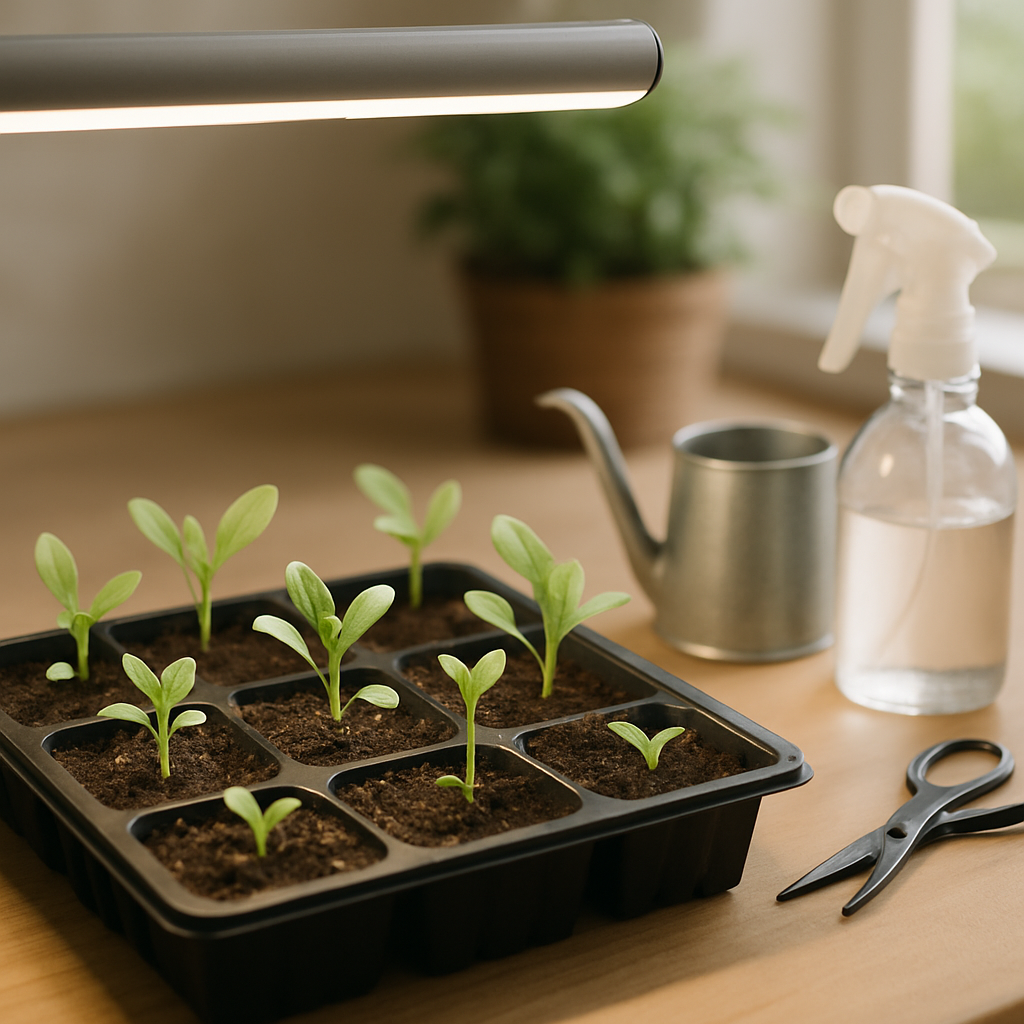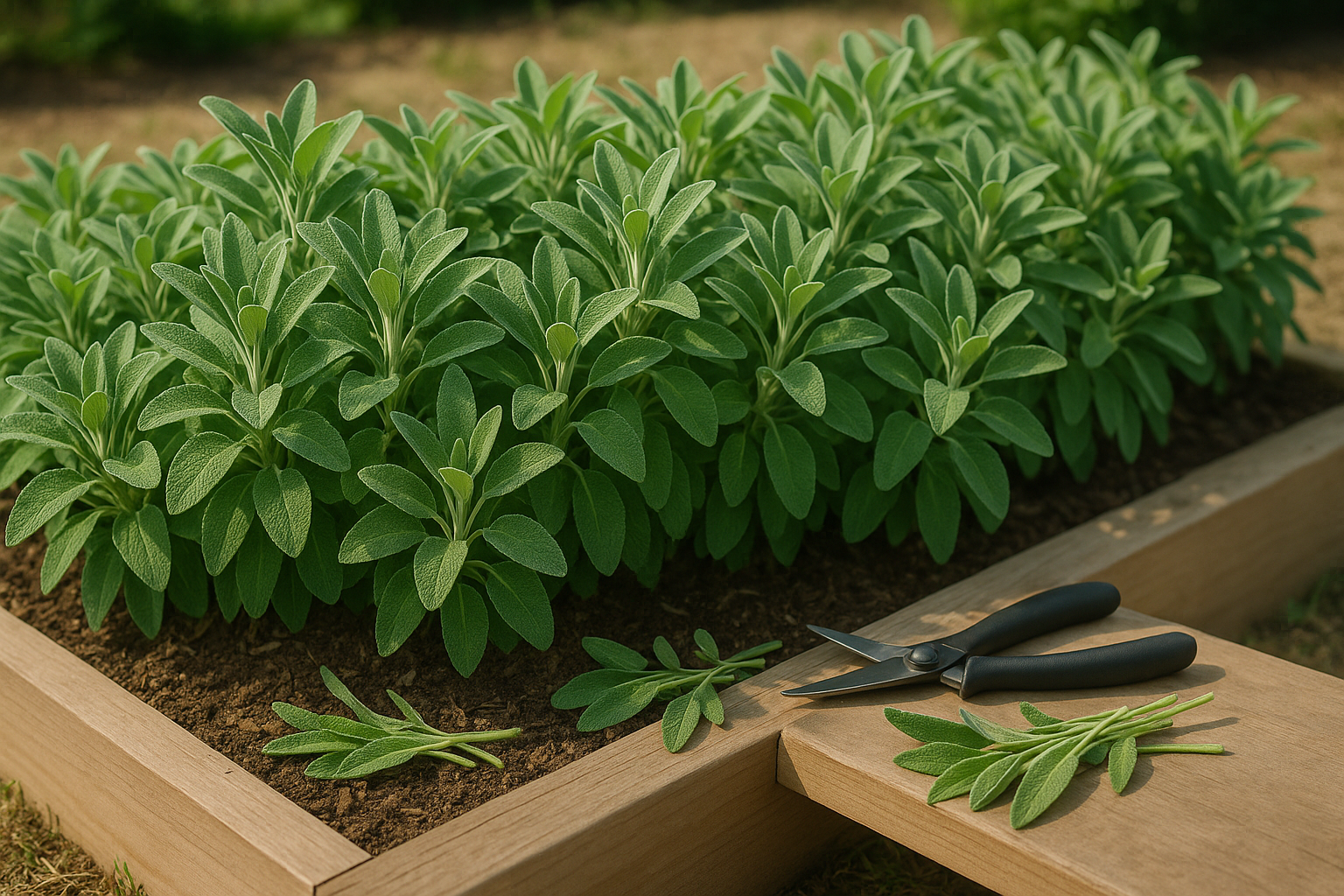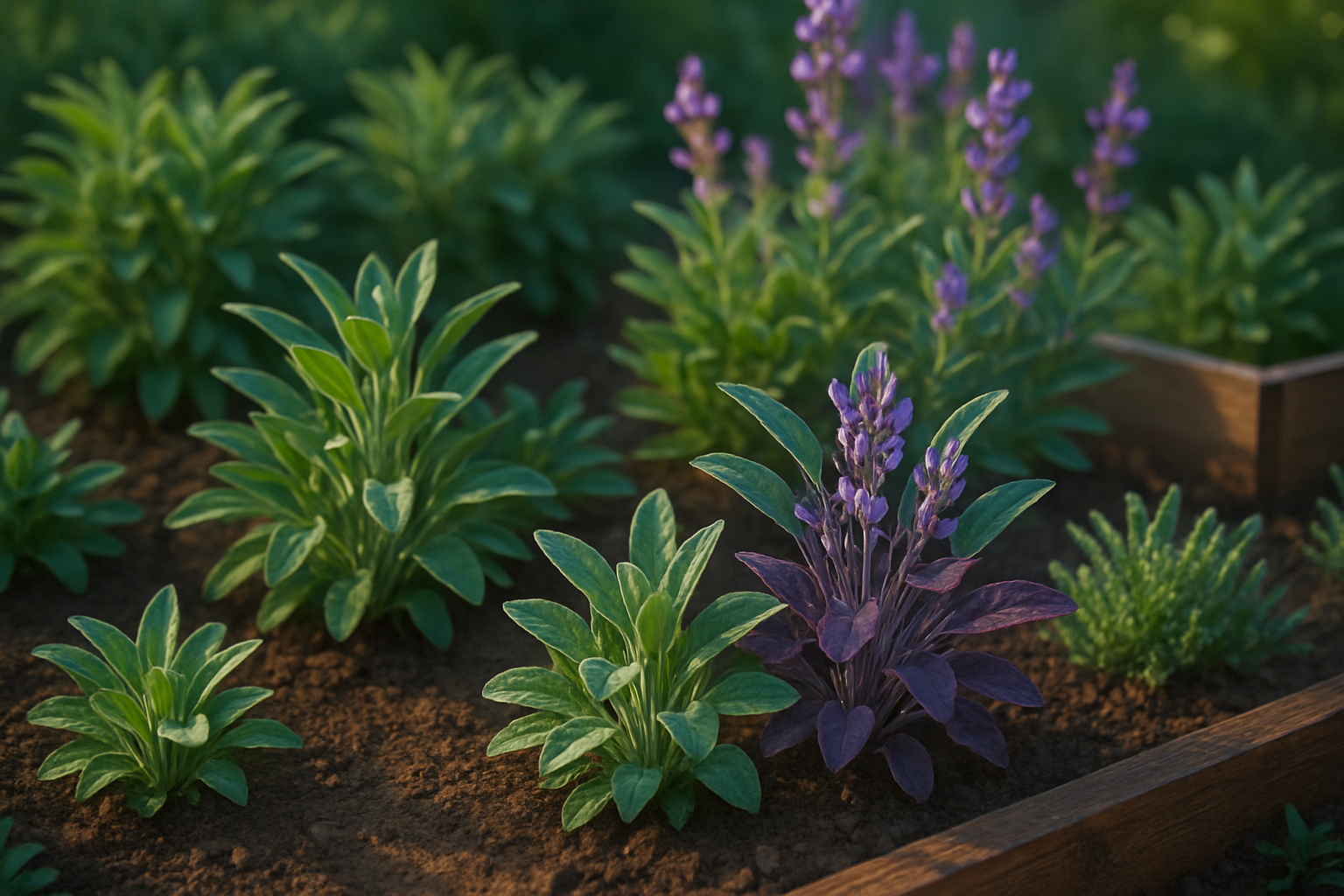Intro
Sage is a beloved herb found in kitchens and gardens around the world, prized for its earthy flavor and fragrant leaves. Gardeners often choose sage for its hardiness and ease of care, while cooks love adding its fresh or dried leaves to everything from roasted meats to savory breads. Whether you’re a green-thumb enthusiast or just starting out with a windowsill planter, understanding how sage grows can make all the difference in your success.
Knowing sage’s growth timeline helps you plant at the right time, anticipate harvests, and avoid common setbacks like stunted growth or flavorless leaves. In this guide, you’ll find a simple breakdown of sage’s growth stages, plus practical tips for when to plant, how to nurture your plants, and the best moments to harvest for maximum flavor. Even beginners without a yard can learn how to grow healthy sage indoors or outdoors with just a few easy steps.
Sage Growth Stages – An Overview

Sage, a versatile and aromatic herb, goes through several distinct growth stages that shape its development and yield. The journey begins with germination, which typically takes 10–21 days when seeds are given consistent moisture and warmth. Propagation by cuttings often bypasses this stage, jumping directly to the seedling or early vegetative phase, skipping the sometimes sluggish seed start.
As seedlings emerge, they develop their first sets of true leaves within three to four weeks. This stage is sensitive to both overwatering and inadequate light. Once established, the sage plant moves into the vegetative stage, focusing on growing lush foliage and branching out. This phase can last from one to three months, depending on factors like temperature, sunlight, and soil quality.
Flowering generally occurs in the second year for plants grown from seed. However, cuttings taken from mature plants may flower within their first year if conditions are optimal—think plenty of sun, moderate watering, and well-draining soil. Once in bloom, the plant produces its signature purple, white, or pink flowers, often during late spring or early summer.
The final stage, maturity, is marked by a well-established root system and bushy growth, allowing for regular harvesting of leaves. Expect up to six months from seed to mature, harvestable sage in ideal indoor conditions, or closer to a year outdoors. Cuttings reach maturity faster, sometimes within just three months.
Keep in mind that each stage’s timing can shift depending on climate (sage prefers warmth and low humidity), level of care, and the chosen propagation method. Patience and attentive care go a long way in your sage-growing journey.
“`html
From Seed to Sprout – Germination and Seedling Stage
Germination is the crucial first step in a plant’s life cycle, where seeds transition from dormancy to growth. Typically, seeds begin to sprout within 10 to 21 days, but this timeframe can vary depending on the plant species, seed quality, and environmental conditions.
For most common garden veggies and flowers, aim to keep the soil temperature between 65 and 75°F (18–24°C)—a seedling heat mat can help maintain this warmth if your indoor space is chilly. While some seeds need light to germinate (like lettuce), many prefer darkness until they sprout, so check the packet for directions. However, a bright spot is usually best once the first green shoots appear.
After the seed cracks open and sends up a tiny stem and leaves, it enters the seedling stage, which lasts about 2 to 4 weeks. During this time, seedlings develop their first true leaves and start photosynthesizing, but they are extremely sensitive to overwatering, temperature swings, and poor light.
To help your seeds and seedlings thrive:
- Place trays in a spot with plenty of indirect sunlight, or use a grow light 2–4 inches above the plants.
- Water gently with a spray bottle or bottom-watering tray to keep the soil consistently moist but never soggy—damp, not drenched, is key.
- Avoid cold drafts and sudden moves, as young plants are easily stressed.
Patience, gentle handling, and a steady environment will set the stage for strong, healthy growth.
“`
Vigorous Growth – Vegetative Stage

The vegetative stage is a crucial chapter in your plant’s life, marked by a burst of vigorous growth as leaves, stems, and branches develop rapidly. After seedlings have established themselves and grown sturdy—typically two to six weeks after germination—this period begins and lasts until the plant is ready to transition to flowering.
During the vegetative stage, you’ll notice plants becoming bushier, producing lots of new leaves and side shoots. This is their way of capturing more light for future energy needs. To support this rapid expansion, focus on providing consistent care:
- Prune any weak or congested growth to encourage air circulation and a stronger structure.
- Water deeply, but only when the top inch of soil feels dry to prevent soggy roots.
- Introduce a balanced fertilizer rich in nitrogen, which is essential for leafy growth.
One helpful tip is to gently pinch back the tops of stems—this simple technique encourages bushiness by promoting the growth of multiple new shoots.
However, watch out for two common pitfalls:
- Overwatering, which can lead to root rot and stunted development.
- Overcrowding, which limits airflow and light, increasing the risk of disease and weak stems.
Imagine a tomato plant grown in cramped quarters compared to one with space to stretch—proper spacing always produces a healthier, more productive specimen.
By providing ample room, appropriate pruning, and attentive watering and feeding, your plants will thrive during this vegetative stage, laying the groundwork for a successful flowering and fruiting phase ahead.
Flowering to Full Maturity
Sage is a rewarding herb for gardeners, but understanding its flowering and maturity stages is key to getting the most from your plant. Sage typically flowers in late spring or early summer, especially as a perennial in its second year. The appearance of spikes with purple, blue, or white flowers is more than just decorative—it signals that sage has reached a mature stage in its life cycle.
When sage begins to bloom, the plant redirects much of its energy away from producing new, tender leaves toward supporting its blossoms and, eventually, seed development. This energy shift means leaf growth slows down, and the flavor of the leaves can become more bitter and coarse.
For those who use sage primarily for its aromatic leaves in cooking or tea, it’s best to harvest before the plant starts flowering. Pick leaves in the morning when their oils are most concentrated, just before buds arise. If you notice flower buds forming, consider pinching or trimming them off early. This simple step encourages the plant to keep focusing on leafy growth rather than reproduction.
Many gardeners follow a routine of snipping back flower spikes throughout the season—this not only extends the productive window for fresh, flavorful leaves but also helps keep the sage bushier and more robust year after year.
In short, watching the flowering cycle of sage lets you time your harvesting for the best taste and yield, while a little maintenance can keep your sage lush and vibrant longer.
Key Factors Influencing Sage Growth
Several key factors influence sage’s healthy growth and vigorous development, including sunlight, soil quality and drainage, watering routines, temperature, and plant spacing.
First, sage thrives in full sunlight—ideally at least six hours a day—so planting it in a bright, open spot is crucial. If you’re growing sage indoors, place it near a south-facing window.
Well-draining soil is another must: sandy or loamy soil prevents root rot, and mixing in a little compost can boost fertility without making the soil heavy.
When watering, let the top inch of soil dry out between waterings—sage hates soggy roots, so err on the dry side, especially once established.
Temperature-wise, sage prefers mild warmth; it grows best between 60°F and 70°F and should be protected from harsh frost or scorching heat with mulch or shade cloth as needed.
Spacing is often overlooked but vital; give each plant 18 to 24 inches of room to ensure good air circulation, which lowers the risk of mildew and disease.
When it comes to propagation, cuttings usually outpace seeds in both reliability and speed. Cuttings typically root and become sturdy enough to transplant in three to four weeks, while seeds may take two weeks just to sprout and a further few months to reach transplant size.
For beginners or those seeking faster results, starting with cuttings is the surest way to a healthy, thriving sage plant.
FAQs and Troubleshooting Slow Growth
Slow growth can be frustrating for sage growers, but it’s actually pretty common—especially for first-timers. Sage is a hardy perennial, but it starts off slow as it focuses on building strong roots.
One of the most asked questions is, “Why is my sage not growing faster?” Often, the answer lies in light, water, or soil conditions.
Light and Water Needs
Sage needs at least six hours of full sun each day and well-drained soil. Overly wet roots can quickly stunt development or cause root rot. For best results, water deeply but let the top inch of soil dry out between watering sessions.
Pests and Diseases
If your sage looks pale or wilty, check for common pests like aphids or spider mites. Both can be washed away with a gentle spray of water or treated with insecticidal soap.
Fungal issues, such as powdery mildew, usually appear if the air is humid or the leaves stay wet. Improve air circulation by spacing your plants and always water at the base.
Environmental Stress
Sudden cold or heat can also slow growth. Moving potted sage to a sheltered spot during extreme weather helps protect the plant.
Fertilizing Tips
A frequent mistake is over-fertilizing—sage thrives in lean soil, and too much fertilizer can actually reduce flavor and growth.
Encouraging Healthy Growth
- Trim leggy stems to encourage bushiness.
- Be patient—sage grows slowly at first but rewards your care over time.
Don’t give up; every grower faces these hiccups, and with time and care, your plants will thrive and produce for years to come.
